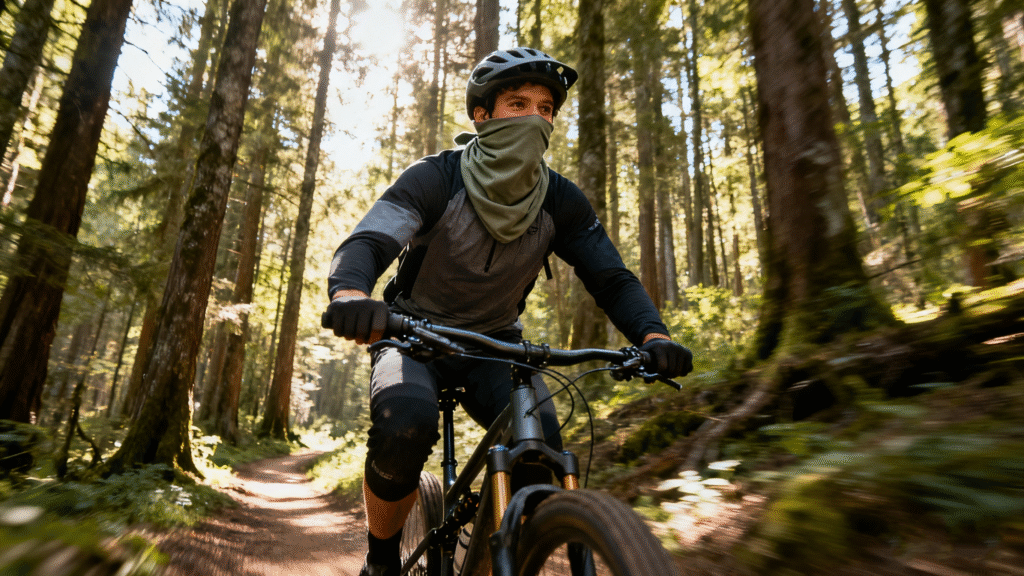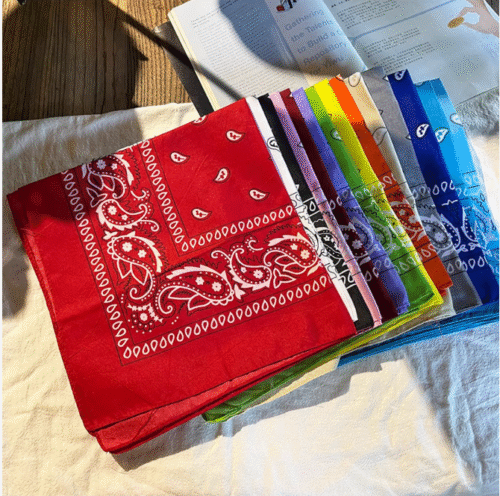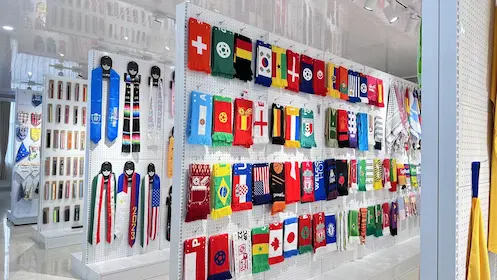Subtitle: From Sun Protection to Sweat Management: A Deep Dive Into Why Pros Still Rely on This “Old-School” Gear
Intro: Busting the Myth
When you hear “bandana for outdoor sports,“ you probably picture an old-school cowboy or maybe a rocker at a music festival. But if you think it has no place in your “pro” gear bag, you are seriously missing out on one of the most versatile tools in your pack.
The question isn’t “Are bandanas good for sports?”—the real question is: “Do you know how to actually use one to solve real outdoor problems?”
As someone who works with textiles and outdoor gear for a living, I’m going to break down why this simple piece of cloth is a non-negotiable for experienced hikers, trail runners, and cyclists.
The Core Functions: 3 Big Problems a Bandana Solves
Out on the trail, you’re basically fighting three things: the weather, your own sweat, and the environment. The outdoor bandana has stuck around for so long because it can handle all three.
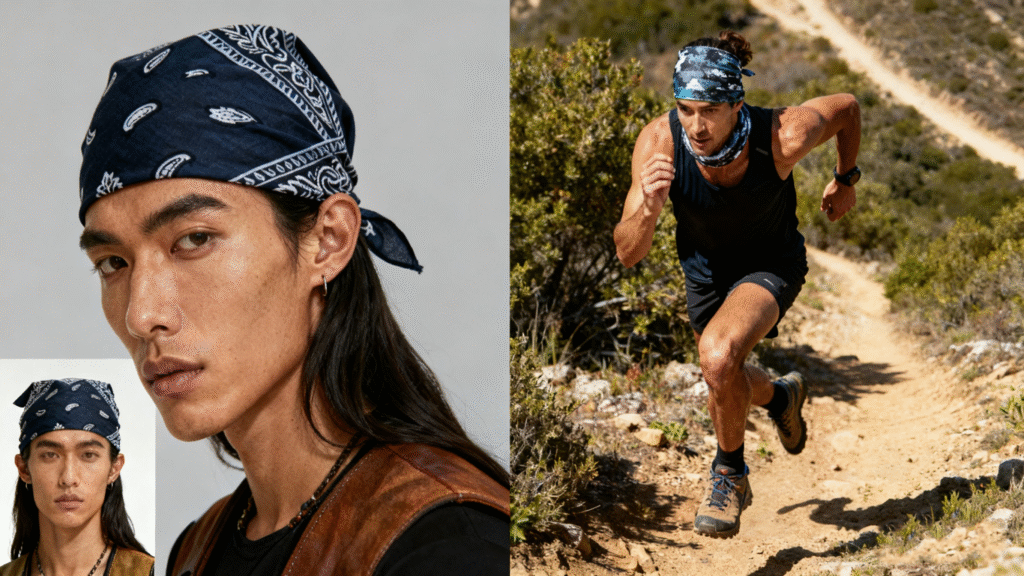
1. Sweat Management
- The User Problem: “When I’m hiking or running, sweat always drips into my eyes. It stings, and it blocks my vision.”
- The Solution: This is its most classic use. Fold it into a headband and tie it on your forehead.
- Pro Tip : Your traditional bavlněný šátek is super absorbent, but once it’s soaked, it’s heavy and stops working. Modern high-performance microfiber or polyesterové šátky have awesome moisture-wicking powers. They pull sweat off your skin and spread it out to evaporate fast, keeping you dry.

2. Environmental Protection
- The User Problem: “How do I stop breathing in dust and sand when I’m biking or in the desert? Or how do I keep my neck from getting totally fried?”
- The Solution: A bandana is a lightweight shield against nasty conditions.
- Dust Mask: On dusty trails (think mountain biking or an ATV), pull it up over your mouth and nose. It does a decent job filtering out grit.
- Sun Gaiter: Wear it as a nákrčník to protect the back of your neck (a spot everyone forgets) from harsh UV rays (UV protection). You’ll see tons of anglers and desert hikers doing this.
- Wind/Warmth: On a cold morning or at high altitude, it gives you just enough wind protection and warmth for your ears or neck.
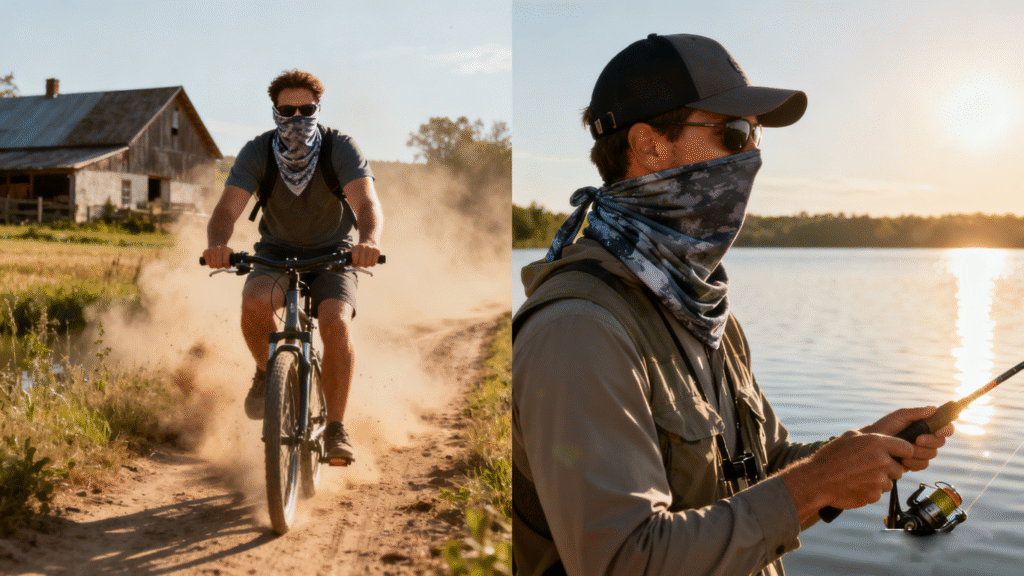
3. Temperature Regulation (Thermoregulation)
- The User Problem: “It’s way too hot, and I feel like I’m overheating. What’s a quick way to cool down?”
- The Solution: Use evaporative cooling.
- Real-World Example: This is a key trick for experienced ultra-marathon runners. At an aid station, they’ll dip their bandana in ice water and wear it on their head or neck (right over the artery). As the water evaporates, it pulls a ton of heat with it, giving you rapid physical cooling. This is a life-saver in hot races.
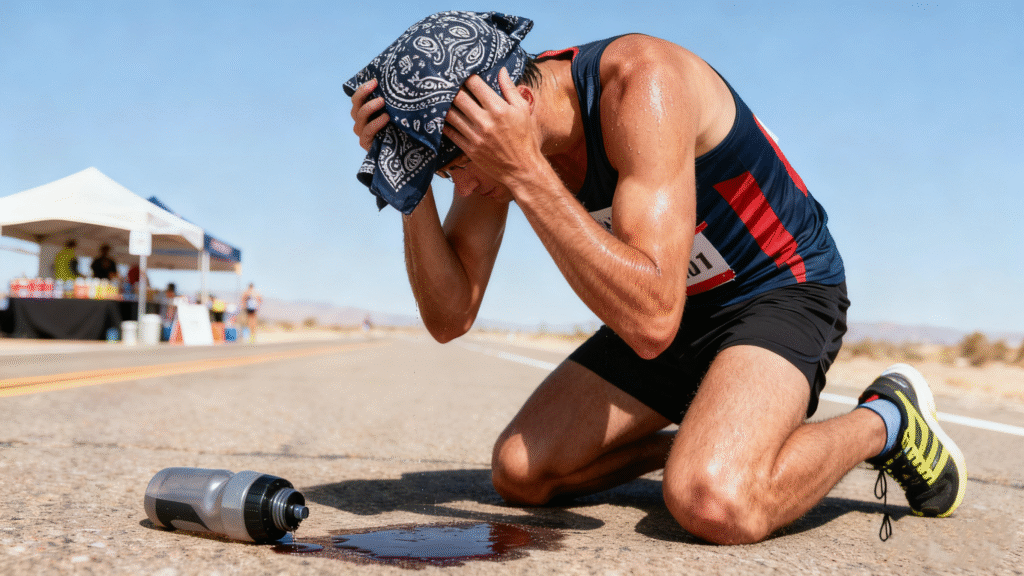
Versatility: Why the Bandana is the Ultimate “Multi-Tool”
For anyone who’s all about ultralight packing, the more one item can do, the better. That’s where the sports bandana really shines.
It’s not just a headband. It’s also:
- A Helmet Liner: Wear it under your bike or climbing helmet to soak up sweat and keep your helmet pads from getting nasty.
- An Emergency Tool: In a first-aid pinch, it can be a temporary sling for an injured arm. A pressure bandage to help stop bleeding. An emergency strap if a buckle on your pack breaks.
- A Rag: Clean the gunk off your sunglasses, camera lens, or GPS screen.
- A Signal Flag: A brightly colored bandana can be tied to a branch to mark your trail or signal for help.
These extra uses make it a valuable “backup tool” in the wild, not just a little accessory.
Buyer’s Guide: Not All Bandanas Are Created Equal
By now, you should get it: choosing the right bandana is key. Here’s the pro recommendation
Material Recommendations
- For Sweat & High-Output Sports: Absolutely avoid 100% cotton. Cotton soaks up water and doesn’t dry (there’s a famous saying in the outdoor world: “Cotton Kills”). You want a high-performance bandana made from polyester, microfiber, or Merino vlna. These materials wick sweat, dry fast, and often have a UPF (sun protection) rating.
- For Cooling & Wiping (Low-Intensity / Hot): This is the one time a traditional cotton bandana actually has an edge. Because it holds water, it’s perfect for that “dip in cold water” cooling trick.
- For Max Versatility (The Seamless Tube): The modern seamless tubular bandana (like a Buff) is the evolution of the old square one. They’re made of stretchy, wicking fabric, have no seams, and can be worn in a dozen different ways (hat, mask, headband, etc.). This is the most popular choice for outdoor sports right now.
Other Things to Consider
- Velikost: Make sure it’s big enough to actually tie around your head or neck.
- Barva: Bright colors are easier to see if you drop it or need to use it as a signal.
- Tech: Some high-end ones have built-in UPF ratings or anti-microbial treatments to fight the stink.
- Fast-Drying: For a long trip, you want something you can rinse out and have it be dry by morning.
The Verdict: Is It Good? No, It’s a Must-Have.
So, are bandanas good for outdoor sports? Yes. 100%.
But you have to stop thinking of it as a fashion accessory and start seeing it as a piece of functional, technical gear.
From managing sweat and blocking sun to being a backup tool in an emergency, a multi-functional bandana (especially a modern tech-fabric one) is one of the lightest, most reliable pieces of gear you can carry.
Next time you pack your bag, make sure you’ve got one.
